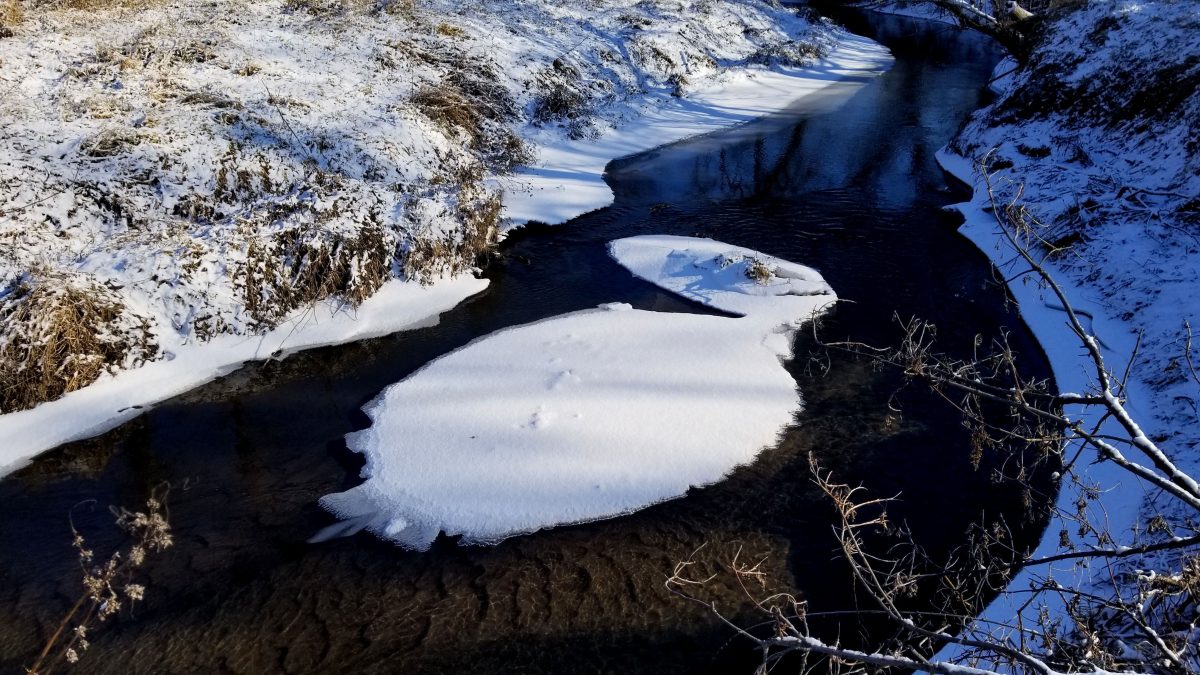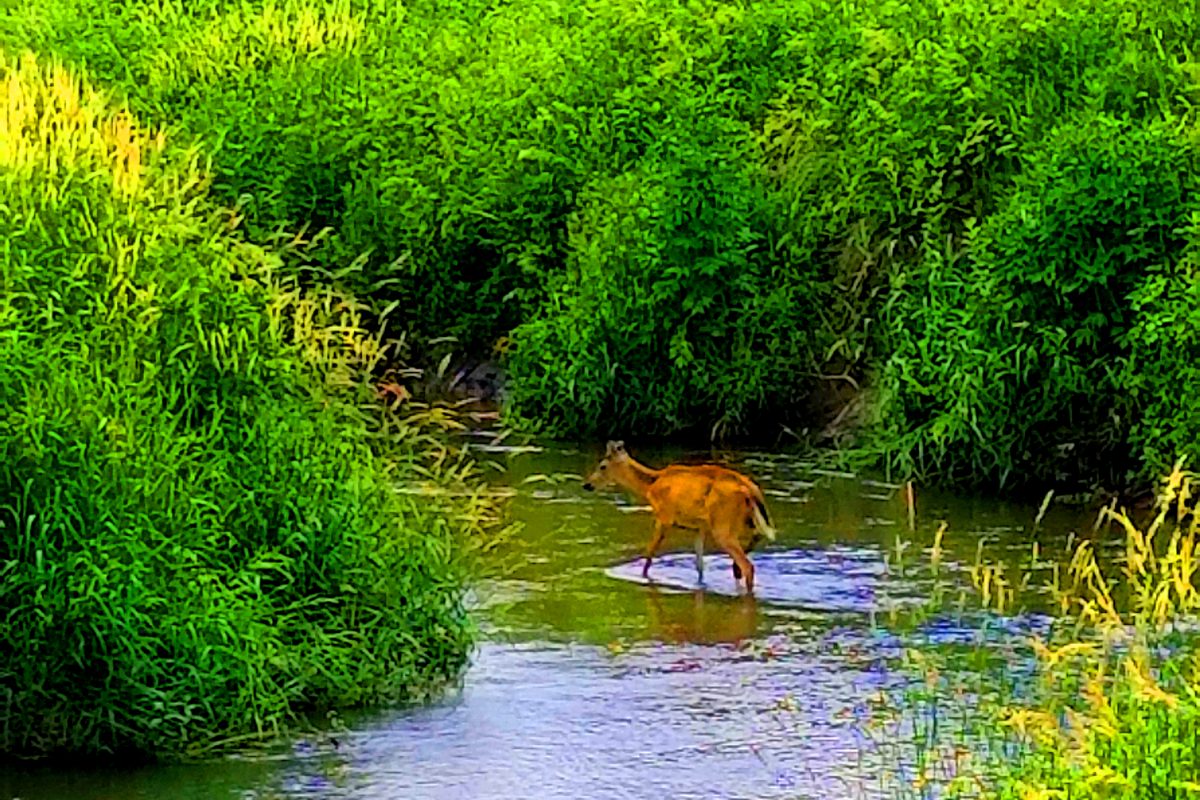On the day after Christmas I walked my route to Abbe Creek. My ankles were tested by frozen soil knobs which jut through the dried, crackling corn leaves. Broken milkweeds fluttered in the wind’s gentle touch. Snow patches gave sign of winter’s first strike.
Abbe Creek, one-half mile north of Mount Vernon, originates in various fields to the east. It eventually joins Big Creek eight miles to the west. To access Abbe Creek I walk over a slope usually planted with corn or soybeans. Sunk into this hardened ground is corn unclaimed by the harvest. Heart-shaped cuts in the soil show the steps of deer who wandered on a warmer, more muddy day. I walk into the tall grass where pheasants hide and deer sleep.
Abbe Creek slices through an area once home to the first white settlers of eastern Linn County, but originally home to the Sac and Fox, our area’s First People.
Sometimes artifacts surface in the fields, belongings of those who lived here before: a pottery shard from 1840, a rotting wagon axle, a rusted ring, a 1940s vintage glass airplane toy, or an arrowhead from some evening hunt.
Creekside trails may have been traversed for centuries by creatures and humans. Further downstream are three Indian burial mounds.
Abbe Creek’s watershed still reveals rocks left by glaciers. Trees and grass fill dry beds where the creek once coursed, making haven for rabbit, raccoon, skunk, squirrel and fox.
Owl, hawk, blue heron, crow, duck, geese, woodpecker and an array of songbirds soar about.
I recall warm spring nights that come alive, bringing forth the moist earth smell. Sometimes fog will layer the valley. The deer’s snort, the beaver’s tail slap, or the passing coyote’s footsteps are part of the night symphony. The pheasant’s squawk is the day’s measure. Yet, the creek provides a certain stillness.
Abbe Creek cuts 10 feet deep into the Iowa soil. Blue clay veins streak sections of the creek’s otherwise ebony bank. Roots protude: delicate from the tall grass and massive where the tree falls without letting go of the earth. These soil layers attest to life’s continuation. Standing deep in the creek bed one can see back in time, the layers of change.
Today the creek is partially iced save for open spaces where the clear water seems black by comparison. Distant gurgling attests to the beaver’s determination to dam the water’s flow. On warmer days soft-shell turtles would sun on the bank, only to dive at my intrusion. In higher water times the otter playfully glides the current.
Approaching dusk reddens the sky, making delicious background for the leafless tree silouhette. The woods are a mixture of oak, elm, willow and plum and other trees whose names I know not, but whose shapes, textures and placement I recognize.
Nearby another small stream flows into the Abbe. I regard as sacred the place where waters join.
I consider the directions as described in Black Elk Speaks: the East as the source of peace, wisdom and red light; the yellow South for its warm breeze which make things grow; the West gives electricity, black thunder and the rains which power one’s spirit; and the cold, white North from whence relentless winds bring strength and endurance. Earth mother, with her life-filled soil, receives our step and father sky wraps us all with stars, moon and sun.
I give thanks, remembering the people who have gathered here before. I then walked through the dark woods to my home.
In summer, a deer meanders through Abbe Creek without regard to my presence.


